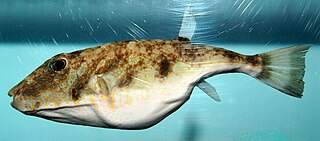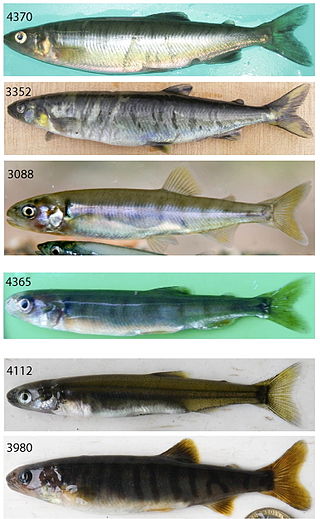
Clupeidae is a family of clupeiform ray-finned fishes, comprising, for instance, the herrings and sprats. Many members of the family have a body protected with shiny cycloid scales, a single dorsal fin, and a fusiform body for quick, evasive swimming and pursuit of prey composed of small planktonic animals. Due to their small size and position in the lower trophic level of many marine food webs, the levels of methylmercury they bioaccumulate are very low, reducing the risk of mercury poisoning when consumed.

John Stevens Henslow was an English Anglican priest, botanist and geologist. He is best remembered as friend and mentor to his pupil Charles Darwin.

Sprat is the common name applied to a group of forage fish belonging to the genus Sprattus in the family Clupeidae. The term also is applied to a number of other small sprat-like forage fish. Like most forage fishes, sprats are highly active, small, oily fish. They travel in large schools with other fish and swim continuously throughout the day.

The European sprat, also known as brisling, brisling sardine, bristling, garvie, garvock, Russian sardine, russlet, skipper or whitebait, is a species of small marine fish in the herring family Clupeidae. Found in European, West Asian and North African waters, it has silver grey scales and white-grey flesh. Specific seas in which the species occurs include the Irish Sea, Black Sea, Baltic Sea and Sea of the Hebrides. The fish is the subject of fisheries, particularly in Scandinavia, and is made into fish meal, as well as being used for human consumption. When used for food it can be canned, salted, breaded, fried, boiled, grilled, baked, deep fried, marinated, broiled, and smoked.

The longfins, also known as roundheads or spiny basslets, are a family, Plesiopidae, which were formerly placed in the order Perciformes but are now regarded as being incertae sedis in the subseries Ovalentaria in the clade Percomorpha. They are elongated fishes, found in the Indian Ocean and western Pacific Ocean.

The New Zealand blueback sprat is a herring-like, forage fish of the family Clupeidae found in the waters around New Zealand, between latitudes 37° S and 48° S, and longitude 166° E and 180° E, to depths of up to 50 m. It belongs to the genus Sprattus, a small oily fish usually known by their common name, sprats. Its length is up to 12 cm.

Sprattus is a genus of small oily fish of the family Clupeidae. They are more usually known by their common name, sprats. There are five species in the genus.

Sphoeroides is a genus of pufferfishes.

The New Zealand sprat is a herring-like, marine fish in the family Clupeidae found in the subtropical southwest Pacific Ocean endemic to New Zealand. It belongs to a genus Sprattus of small oily fish, usually known by their common name, sprats.

Aplochiton is a genus of ray-finned fish of the family Galaxiidae native to Argentina, Chile and the Falkland Islands.

Pisidium is a genus of very small or minute freshwater clams known as pill clams or pea clams, aquatic bivalve molluscs in the family Sphaeriidae, the pea clams and fingernail clams.

Hyperlophus is a genus of sprat belonging to the herring family Clupeidae. They are endemic to the waters around Australia. There are currently two species recognized in the genus.

Clupeoides is a genus of sprats that occur in rivers in Southeast Asia. There are currently four recognized species in the genus.

Clupeonella is a genus of fish in the family Clupeidae. They are widespread in the fresh and brackish waters of the Caspian Sea and Black drainages.

An anchovy is a small, common forage fish of the family Engraulidae. Most species are found in marine waters, but several will enter brackish water, and some in South America are restricted to fresh water.

Corica is a small genus of sprats that occur in rivers in South Asia and Southeast Asia. Two described species are placed in the genus.

Microthrissa is a genus of sprats in the herring family, Dorosomatidae, which is endemic to Africa. There are five recognized species in the genus.

Caulolatilus is a genus of tilefishes native to the Pacific and Atlantic coasts of the Americas. This genus is regarded as the least specialised and the most basal of the tilefishes.

The Alosidae, or the shads, are a family of clupeiform fishes. The family currently comprises four genera worldwide, and about 32 species.
Lycodinae is a subfamily of marine ray-finned fish belonging to the family Zoarcidae, the eelpouts. These eelpouts are found are in all the world's oceans, with a number of species being found off southern South America.

















